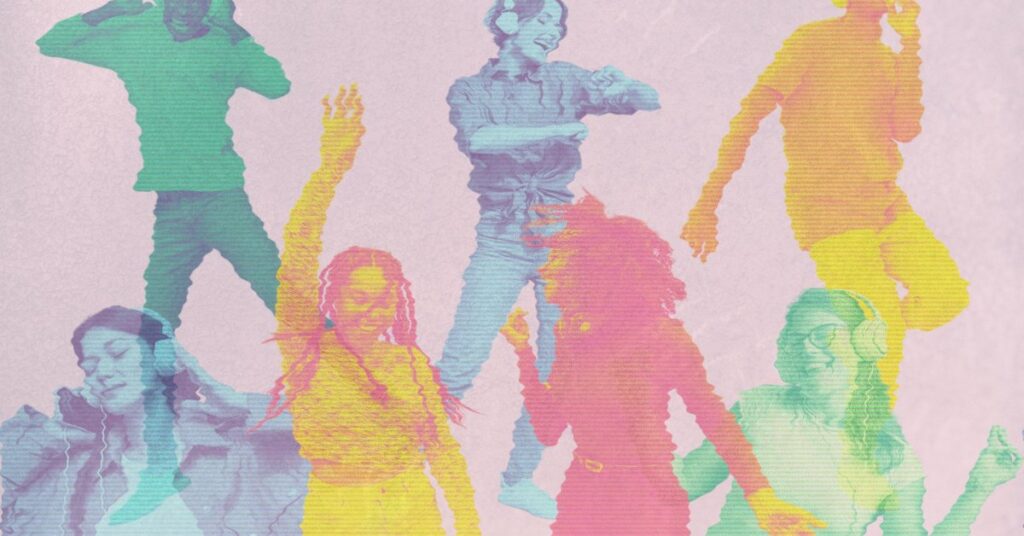The “Song of the Summer” feels like a relic of the past. With the absence of music video programs, such as Total Request Live and 106 & Park, and the decline in relevance of televised award shows, like the MTV Video Music Awards, the idea of a pop monoculture has not only ceased to exist but has also resulted in the loss of shared cultural touch points that connect (or sometimes, some might say, thrust upon) millions of Americans. In its stead, a fragmented culture has come to exist, thanks to the rise of the curated algorithm and our social media feeds perfectly sculpted to fit our interests and experiences.
Yes, this has made us more—or at least feel more—disconnected. But is it all so bad? Perhaps, in the absence of the so-called “meritocracy” that once dictated culture, this abundance of choice for people to connect with music and pop culture could be a good thing.
Maybe that’s why the Song of the Summer feels like such a dinosaur. We’ve simply grown out of it.
In 2010, when Billboard created the Songs of the Summer chart, the music trade publication explained that a song’s placement on the Songs of the Summer chart was determined by its “cumulative performance on the weekly streaming, airplay, and sales-based Hot 100 chart from Memorial Day through Labor Day.” This makes sense, given the time at which the chart was created. In 2010, Facebook was the most popular social media platform. The first-generation iPad had just been made available to the public. And “California Girls” by Katy Perry was the No. 1 song on the inaugural summer songs chart. True to form, that song was everywhere—you couldn’t escape it.
Fast forward to 2024, and the song of the summer was “I Had Some Help” by Post Malone featuring Morgan Wallen. The placement, which seems to be at odds with Brat summer, the meteoric rise of Chappell Roan, “the bubblegum pop of Sabrina Carpenter,” and the historic rap beef of Drake and Kendrick Lamar, is an indicator of the chart’s inability to encapsulate the music that people are actually listening to.(“Not Like Us” reached No. 3 on Billboard in 2024, followed by “Espresso” at No. 4 and “Please, Please, Please” at No. 6, and “Good Luck Babe” at No. 11. “Like That”, the catalyst for the Drake-Kendrick beef landed at No. 15) This is partly because of TikTok, which has completely changed the way music streaming (and a song’s popularity) operates. And their data tells a different story.
Read More: Maybe We Need Recession Pop Right Now
Tinashe, Blood Orange, ian, Lay Bankz, GloRilla featuring Megan Thee Stallion, and Jordan Adetunji held the coveted top spots on TikTok’s U.S. summer charts. With the exception of “Champagne Coast” by Blood Orange, which was released in 2011, the remaining top 10 songs were released in 2024. These music choices appear to be more reflective of how vastly the concept of the Song of the Summer has changed for music listeners. Americans are shifting towards personalized music experiences and playlists, rather than being homogeneous music consumers.
For emergent artists, the move towards personalization is a double-edged sword. Now, artists are utilizing data from social media platforms to shape and develop how they connect with their audiences. But the unintended consequences of personalization sometimes means the absence of access points for artists to connect with new fans, unless they find their way onto a listener’s algorithmic playlists. In the 1990s and 2000s, artists could be exposed to a larger audience via song placement on a prominent movie soundtrack or a guest appearance on a popular television show. The advent of TV and film streaming has, to some extent, destroyed that pipeline for musicians.
The only artists to claim worldwide dominance and control over music and pop culture that symbolize any semblance of a monoculture are Beyoncé and Taylor Swift. In 2023, the Renaissance World Tour and The Eras Tour brought in billions of dollars to the economy. Throughout their respective decades-long careers, the two have appeared on film & tv, music video programs, performed at televised award shows, and released chart-topping songs that defined a summer. They might have greatly benefited from the monoculture, but in a multicultural world, where consumers and listeners are curating their own experiences, there is no need for uniformity.
In 1999, music critic Ann Powers described the song of the summer in The New York Times as “The singles that blare forth from car radios or boom boxes in parks and at the beach are the catcalls of a nation baring its collective skin. With the pop scene in a giddy, fast-moving mood, such quickly fading shout-outs seem more resonant than usual.” But the collective skin of America is not homogeneous. The average American is not going to Fire Island for a tea dance during the summertime. Or Martha’s Vineyard to relax around the shores with their families.
There has never been a universal summertime experience in America. So how can one song feel right to all of us?
The only thing that connects Americans during the summer is the weather. The sunshine breeds an incessant need for a beach or proximity to a pool of water. The produce demands a picnic in the park with a sandwich to be eaten alongside chips and a pickle. The nonstop waves of heat usher in short shorts and bikini tops, in an attempt to regulate body temperature. Young Americans, out of school, utilize the season to declare their independence from school, while the employed are looking up the nearest happy hour to their place of work. These are the experiences that connect us. Maybe it is the right of every American to dictate what song feels right to them. And maybe sharing your respective summer songs with others is the connection point that America actually needs.
Read the full article here


